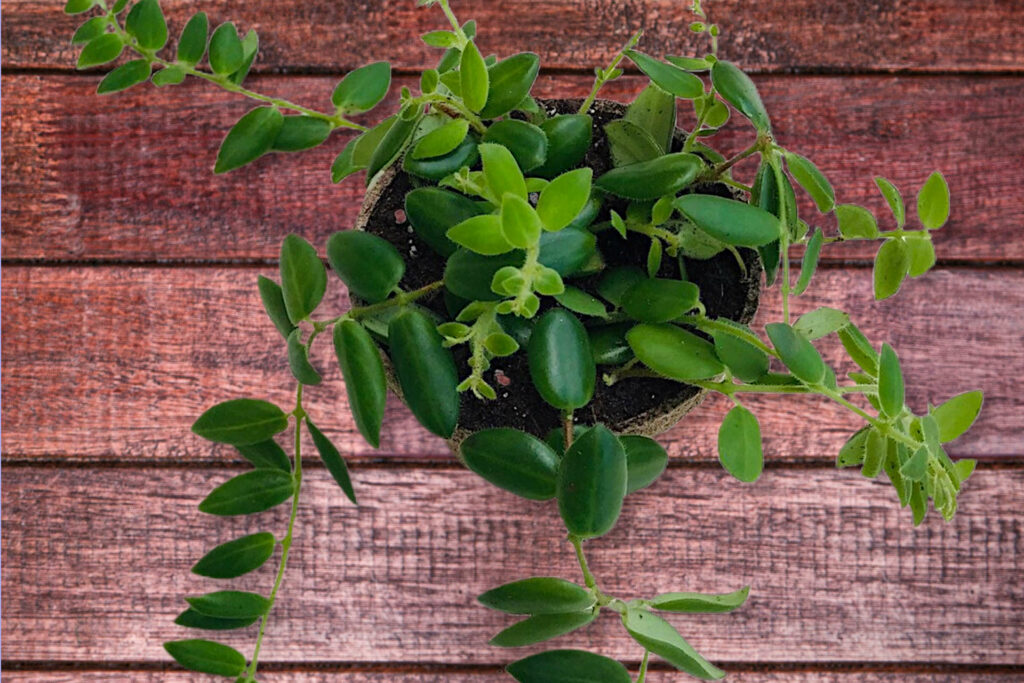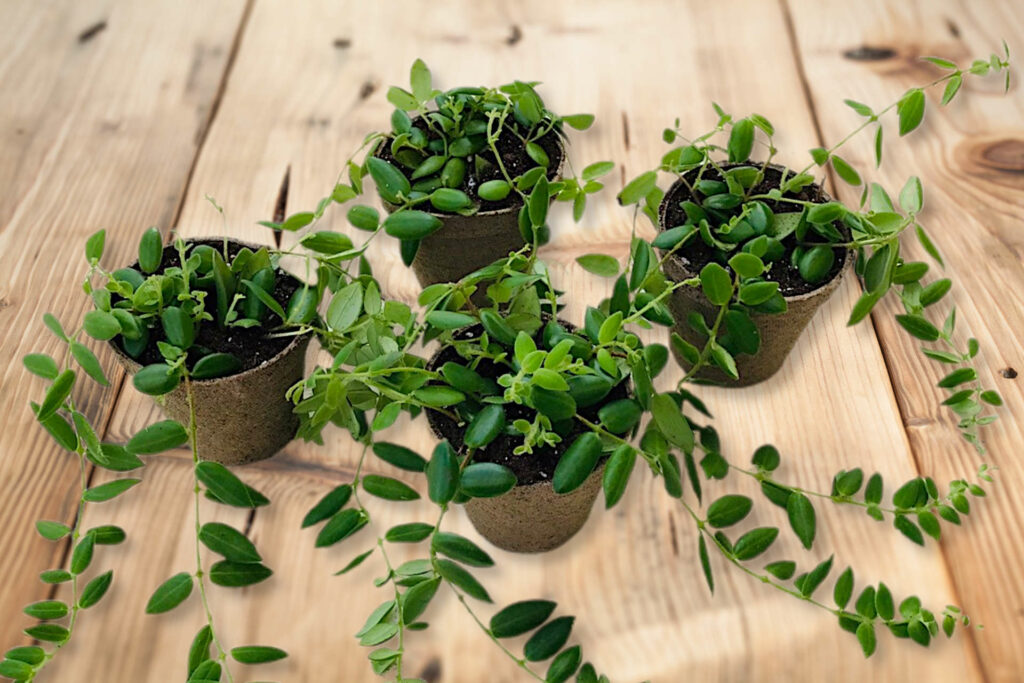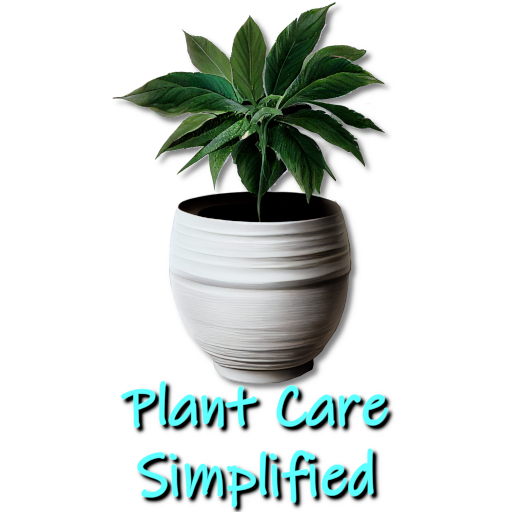The Gracilis Lipstick Plant: The Perfect Houseplant
Kim is passionate about helping people create beautiful, healthy indoor spaces that are filled with plants. Kim believes that plants make us happier, healthier human...
The Gracilis Lipstick Plant: The Perfect Houseplant Are you looking for a houseplant that is easy to care for, has stunning red flowers, and adds a touch of tropical flair to your home? If so, you might want to consider the Gracilis lipstick plant. This plant is a type of lipstick vine that belongs to the genus Aeschynanthus. It is native to Southeast Asia, where it grows as an epiphyte on tree branches and rock crevices. As a houseplant, it can be grown in a hanging basket or a pot with a trellis, and it will reward you with a profusion of tubular flowers that resemble lipstick tubes.
Below, we will try to provide you with everything you need to know about the Gracilis lipstick plant and how best to care for it. We will also look at how to propagate it, how to deal with common problems, and finally, where you can find one to buy. By the end, hopefully, you will be ready to add this beautiful plant to your indoor plant collection.
What is a Gracilis Lipstick Plant?

The Gracilis lipstick plant (Aeschynanthus gracilis) is one of the many varieties of lipstick plants that belong to the Gesneriad family. This family includes other popular houseplants such as African violets, gloxinias, and streptocarpus. The Gracilis lipstick plant is also known as the Red Elf Vine because of its small size and bright red flowers.
The Gracilis lipstick plant has slender, brownish vines that can grow up to 3 feet long. The vines have opposite pairs of oval-shaped, light green leaves that are about 1.5 inches long and 0.5 inches wide. The leaves are leathery and have wavy margins. The flowers are produced in clusters at the tips of the vines, usually in spring and summer. The flowers are tubular, about 1 inch long, and have a bright red color. They emerge from dark red calyces that look like lipstick tubes. The flowers are attractive to hummingbirds and butterflies in their native habitat.
The Gracilis lipstick plant is a tidy and delicate-looking plant that does not have densely foliated or branched vines. It is ideal for hanging baskets or pots with a trellis, where it can cascade gracefully over the edges. It can also be trained to grow along a wall or a shelf. It is a low-maintenance plant that does not require much pruning or repotting.
How to Care for a Gracilis Lipstick Plant
The Gracilis lipstick plant is not a difficult plant to care for as long as you provide it with the right conditions and avoid some common mistakes. Here are the main aspects of caring for a Gracilis lipstick plant:
Light
As with most lighting requirements for Lipstick plants, the Gracilis lipstick plant needs bright but indirect light to thrive and bloom well. Too much direct sunlight can scorch the leaves and cause them to fade or drop off. Too little light can result in poor flowering and leggy growth. The best location for this plant is near a south or west-facing window that has a sheer curtain or a shade cloth to filter the light. You can also use artificial lights such as fluorescent tubes or LED bulbs to supplement the natural light.
Temperature
The Gracilis lipstick plant prefers warm temperatures between 65 and 75 degrees Fahrenheit during the spring, summer, and fall. It can tolerate slightly cooler temperatures in the winter, but not below 50 degrees Fahrenheit. Avoid exposing the plant to sudden temperature changes or cold drafts, such as near an air conditioner vent or an open door or window. This can stress the plant and cause leaf drop or bud drop.
Humidity
The Gracilis lipstick plant likes high humidity levels of around 50% or more, as it is used to the moist tropical environment where it originates from. Low humidity can cause the leaves to curl or brown at the edges and reduce flowering. To increase humidity around the plant, you can mist it regularly with lukewarm water, place it on a tray of pebbles with water, use a humidifier, or group it with other humidity-loving plants.
Water
As with any plant, the water regime that you apply has a considerable effect on the ability of your Lipstick plant to thrive. With the Gracilis lipstick plant. It needs consistent moisture during the growing season but not soggy soil. Overwatering can lead to root rot, fungal infections, and leaf drop. Underwatering can cause wilting, yellowing, and flower droop. The best way to water this plant is to check the top 2 inches of the soil with your finger before watering. If they feel dry, water thoroughly until water drains from the bottom of the pot. If they feel moist, wait until they dry out slightly before watering again.
Use room-temperature water that has been left out for 24 hours to allow the chlorine to evaporate. You can also use rainwater or distilled water to avoid salt buildup in the soil. Water less frequently in the winter, when the plant is dormant and does not need as much water.
Soil
When it comes to potting your Gracilis lipstick plant, you will need a well-draining, light, and airy potting mix that mimics its natural epiphytic habitat. A good potting mix for this plant is one that contains peat moss, perlite, vermiculite, and crushed charcoal. You can also use a commercial potting mix for African violets or orchids or make your own by mixing equal parts of peat moss, perlite, and coarse sand. Avoid using heavy or compacted soil that can retain too much water and suffocate the roots.
Fertilizer
In terms of fertilizer, the Gracilis lipstick plant benefits from regular feeding during the growing season, especially when it is flowering. Use a balanced liquid fertilizer that is diluted to half strength, and apply it every two weeks from spring to fall. You can also use a slow-release granular fertilizer that is sprinkled on the soil surface once in the spring. Do not fertilize in the winter, when the plant is resting and does not need extra nutrients.
Pruning
In general, the Gracilis lipstick plant does not require much pruning, as it has a neat and compact growth habit. However, you can prune it lightly to shape it, remove dead or damaged vines, or encourage branching and flowering. The best time to prune this plant is in late winter or early spring before new growth starts. Use sharp and sterile scissors or pruners to cut back the vines by about one-third of their length. You can also pinch off the tips of the vines to promote bushier growth.
How to Propagate a Gracilis Lipstick Plant

The easiest way to propagate a Gracilis lipstick plant is by stem cuttings. You can take stem cuttings from your existing plant when you prune it in late winter or early spring, or you can ask a friend who has this plant for some cuttings. Here are the steps to propagate a Gracilis lipstick plant by stem cuttings:
- Choose healthy and vigorous vines with at least three pairs of leaves and no flowers or buds.
- Cut off 4 to 6-inch long sections of the vines with sharp and sterile scissors or pruners.
- Remove the lower leaves from the cuttings, leaving only two pairs of leaves at the top.
- Dip the cut ends of the cuttings in rooting hormone powder to speed up root formation.
- Insert the cuttings into small pots filled with moist potting mix, such as peat moss and perlite.
- Water lightly and cover the pots with clear plastic bags or domes to create a humid environment.
- Place the pots in a warm and bright location but out of direct sunlight.
- Check the cuttings regularly and mist them with water to keep them moist but not wet.
- After 4 to 6 weeks, gently tug on the cuttings to see if they have rooted. If you feel some resistance, it means they have developed roots.
- Remove the plastic covers and water the cuttings normally.
- Transplant the cuttings into larger pots with fresh potting mix when they have grown several new leaves.
There are a few other techniques that you can use to propagate Lipstick plants, as well as the option to grow a Lipstick plant from seed.
How to Get a Gracilis Lipstick Plant to Bloom
You will find that if you provide the right conditions that the Gracilis lipstick plant is a prolific bloomer that can produce flowers throughout the year, but especially in spring and summer. However, sometimes a Lipstick Plant may not bloom as well as expected or at all. This can be due to several factors, such as insufficient light, improper watering, lack of fertilizer, or incorrect temperature. Here are some tips to get your Gracilis lipstick plant to bloom:
- Provide bright but indirect light for at least 6 hours a day.
- Water regularly but moderately during the growing season, and reduce watering in the winter.
- Feed with a balanced liquid fertilizer every two weeks from spring to fall.
- Keep the temperature between 65 and 75 degrees Fahrenheit during the growing season, and lower it slightly in the winter.
- Avoid sudden temperature changes or cold drafts that can stress the plant and cause bud drop.
- Prune lightly in late winter or early spring to stimulate new growth and flowering.
- Pinch off spent flowers to encourage more blooms.
Common Problems with Gracilis Lipstick Plants
The Gracilis lipstick plant is generally a healthy and resilient plant that does not suffer from many diseases or pests. However, it can still encounter some problems if not cared for properly. Here are some of the common problems with Gracilis lipstick plants and how to fix them:
Leaf Drop
Leaf drop is a common problem with lipstick plants. For Gracilis lipstick plants, this can be caused by several factors, such as overwatering, underwatering, low humidity, cold drafts, or sudden temperature changes. To prevent leaf drop, you should:
- Water the plant only when the top 2 inches of the soil feel dry to the touch, and avoid overwatering or underwatering.
- Increase the humidity around the plant by misting it, using a humidifier, or placing it on a tray of pebbles with water.
- Keep the plant away from cold drafts or sources of heat, such as radiators or vents.
- Maintain a consistent temperature between 65 and 75 degrees Fahrenheit during the growing season, and lower it slightly in the winter.
Leaf Curl
Leaf curl is another problem that can affect Gracilis lipstick plants. It is usually a sign of low humidity or too much direct sunlight. The leaves may curl inward or outward and lose their color and vitality. To fix leaf curl, you should:
- Move the plant to a location that receives bright but indirect light, and avoid exposing it to harsh sunlight.
- Increase the humidity around the plant by misting it, using a humidifier, or placing it on a tray of pebbles with water.
Leaf Spot
Leaf spot is a fungal disease that can infect Gracilis lipstick plants. It causes brown or black spots on the leaves, which may also turn yellow and fall off. Leaf spot can spread quickly and affect the whole plant if not treated. The main causes of leaf spot are poor air circulation, high humidity, and wet foliage. To prevent and treat leaf spot, you should:
- Prune any infected leaves and dispose of them in a sealed bag.
- Spray the plant with a fungicide that is safe for gesneriads, such as neem oil or copper sulfate.
- Improve the air circulation around the plant by placing it in a well-ventilated area and avoiding overcrowding.
- Reduce the humidity around the plant by misting it less frequently or using a dehumidifier.
- Water the plant at the base and avoid wetting the foliage.
Mealybugs
Mealybugs are small, white, cottony insects that can infest Gracilis lipstick plants. They suck the sap from the plant and weaken it. They also secrete a sticky substance called honeydew, which can attract ants and fungal growth. Mealybugs can be hard to get rid of, as they hide in the crevices of the plant and have a protective wax coating. To control mealybugs, you should:
- Inspect the plant regularly and remove any mealybugs you see with a cotton swab dipped in rubbing alcohol or insecticidal soap.
- Spray the plant with a systemic insecticide that is safe for gesneriads, such as imidacloprid or acephate.
- Isolate the infected plant from other plants to prevent spreading.
Where to Buy a Gracilis Lipstick Plant
The Gracilis lipstick plant is not a very common houseplant, so you may not find it in your local nursery or garden center. However, you can buy it online from various sources, such as:
- [Etsy]: Etsy is an online marketplace where you can find handmade and vintage items from different sellers. You can browse through various listings of Gracilis lipstick plants and choose one that suits your preferences and budget. You can also read reviews from other buyers and contact the seller directly if you have any questions.
- [eBay]: eBay is another online platform where you can buy and sell almost anything. You can search for Gracilis lipstick plants, bid on auctions, or buy them at fixed prices. You can also check the seller’s feedback and ratings before making a purchase.
- [Amazon]: Amazon is one of the largest online retailers in the world, where you can find a wide range of products, including plants. You can order Gracilis lipstick plants from Amazon and get them delivered to your doorstep. You can also read customer reviews and ratings and compare prices from different sellers.
How Much Does a Gracilis Lipstick Plant Cost?
The price of a Gracilis lipstick plant may vary depending on several factors, such as:
- The size and condition of the plant
- The quality and quantity of the flowers
- The type and size of the pot
- The shipping costs and delivery time
- The availability and demand of the plant
Generally speaking, you can expect to pay between $10 and $30 for a Gracilis lipstick plant, depending on where you buy it from and how rare it is. However, some sellers may charge more or less than this range.
Conclusion
The Gracilis lipstick plant is a perfect houseplant for anyone who loves tropical plants with colorful flowers. It is easy to care for, propagate, and bloom as long as you provide it with the right conditions and avoid some common problems. It is also a great plant to add some charm and beauty to your home.
If you are interested in getting a Gracilis lipstick plant, you can buy it online from various sources, such as Etsy, eBay, or Amazon. You can also try to find it in your local nursery or garden center, but it may not be very common. The price of a Gracilis lipstick plant may vary depending on several factors, but it is usually affordable and worth the investment.
Kim is passionate about helping people create beautiful, healthy indoor spaces that are filled with plants. Kim believes that plants make us happier, healthier human beings, and she loves sharing her knowledge with others so they can experience the joys of plant care for themselves. <a href="https://plantcaresimplified.com/kim-marson/">Read more</a>
More Posts